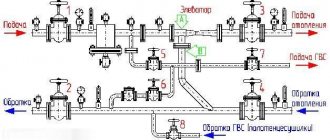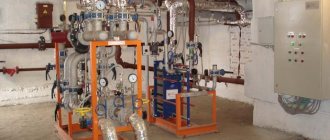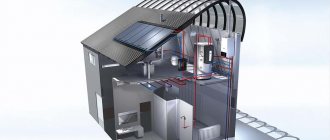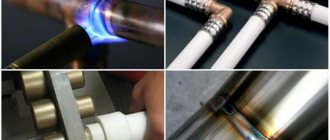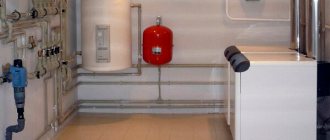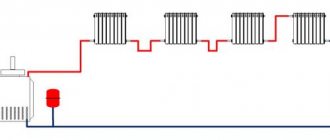For people, an important criterion for choosing a method of heating a home is the amount of costs for installing and maintaining the heating system. Nobody wants utility bills to have a big impact on the family budget.
There is a large selection of autonomous heating systems on the market, which differ from each other in price, complexity of operation, operational efficiency, and environmental impact. Unfortunately, it is difficult to find one that is both cheap, maintenance-free, environmentally friendly and easy to use. Therefore, you need to choose which aspect is more important to you.
What it is?
Autonomous heating is an individual heating system in which all components are installed in the house . Why is this method popular? It's all about saving on utility bills. The owner himself regulates the temperature and heating time, unlike a centralized system, which is also not efficient and sometimes does not provide the proper level of heat. There are also frequent cases of accidents and preventive maintenance.
To install individual heating in a private home, you just need to purchase the necessary equipment.
Self-installation
It is possible to begin installation of autonomous heating only after the creation and approval of the project. In accordance with the project, materials and equipment are purchased.
It is quite possible to equip home heating using unconventional alternative methods with your own hands. As for autonomous gas heating, self-installation in this case is extremely undesirable. This is due to the increased danger when using gas, as well as the fact that acceptance of equipment into operation must be carried out by specialized services. And it is carried out only in relation to equipment and work performed in accordance with the standards and requirements.
Classification
The main element in autonomous heating systems are heating boilers. They are distinguished by the type of fuel used:
- gas;
- electrical;
- solid fuel;
- liquid fuel.
Regardless of the type of boiler, all autonomous systems operate on the same principle:
- Fuel is loaded into the boiler.
- The boiler then burns it, thereby heating the water.
- Heated water is passed through pipes.
- Pipes with hot coolant heat the room.
The total cost of a heating boiler takes into account not only the price of the fuel itself, but also the efficiency of its supply equipment. The higher it is, the more heat you can get.
In terms of year-round performance, devices with less processing power are preferable. It is advisable to choose a boiler with automatic control, which adapts the characteristics to the prevailing conditions and allows you to save money. For the correct and economical functioning of the heating system, you also need to fine-tune its operation.
To reduce costs, it is recommended to choose a high-capacity boiler, such as a wood gasification boiler or a modern and fully automated biomass unit.
Remember that a fireplace or stove can be an excellent additional source of heat in the home that will reduce heating costs. It makes sense to choose a device with storage capabilities. Heat can also be distributed throughout the home using an air heater system or a power source in a water jacketed fireplace.
Types of systems
Autonomous heating systems differ according to the following characteristics:
- Type of combustible material. In the field of heating suburban housing, a wide variety of thermal energy generators are used, operating on all available types of combustible materials. This can be gasoline, fuel oil, kerosene, oil, fuel briquettes made from peat, sawdust, husks, corn cobs, hay, and straw. In areas where gas has not yet been supplied or where creating a connection to an existing gas pipeline is too expensive, propane is used, which is filled into the gas tank with a special machine.
- By type of energy. Combustion energy is used, electricity received from a centralized supplier or produced independently - using a diesel generator and solar panels.
- According to the type of transportation of coolant to radiators. The circulation of hot water can be organized according to a single-pipe or two-pipe scheme. A combined method can also be used.
- By type of heat generator. Boilers are used in which combustion energy is transferred to a coolant, which then releases heat to radiators. Electric convectors are also used to heat the air “on site”.
Electric heating
This type works on electric boilers. Its advantages:
- low noise level during operation;
- affordable price;
- reliability of design;
- easy installation.
The service life of electric boilers is 15 years . Heating a house with this system makes it possible to program the air temperature. This can be done using a temperature sensor, which is best installed in the coldest room.
Minuses:
- high cost of electricity;
- the need for constant access to it.
Choosing a coolant
It is well known that filtered and, if possible, desalted water is most often used for this purpose. But under certain conditions, for example, periodic heating, water can freeze and destroy the system. Then the latter is filled with a non-freezing liquid - antifreeze. But you should take into account the properties of this liquid and do not forget to remove all regular rubber gaskets from the system. Antifreeze quickly causes them to become limp and leaks occur.
Attention! Not every boiler can work with non-freezing liquid, which is shown in its technical data sheet. This must be checked when purchasing it.
As a rule, the system is filled with coolant directly from the water supply through a make-up valve and a check valve. During the filling process, air is removed from it through automatic air vents and manual Mayevsky taps. In a closed circuit, pressure is monitored using a pressure gauge. Usually when cold it is in the range of 1.2-1.5 Bar, and during operation it does not exceed 3 Bar. In an open circuit, it is necessary to monitor the water level in the tank and turn off the replenishment when it flows out of the overflow pipe.
Antifreeze is pumped into a closed heating system using a special manual or automatic pump equipped with a pressure gauge. To ensure that the process is not interrupted, the liquid must be prepared in advance in a container of appropriate capacity, from where it must be pumped into the pipeline network. Filling an open system is easier: antifreeze can simply be poured or pumped into the expansion tank.
Solid fuel heating
For many years, heating using solid fuels: coal, wood or biomass . Their prices vary and depend primarily on the amount of heat generated during combustion. Accordingly, the more you get, the lower the cost of purchasing fuel will be.
Environmentally friendly, selected coal remains very popular. You usually have to pay a little more for it than a regular one, but for many it is the most convenient heating method. For coal combustion, boilers with storage tanks that automatically supply fuel are provided. Their maintenance is less labor-intensive, unlike boilers, the fuel of which must be prepared manually. Once loaded, the charcoal needs to be replenished every few days.
Atmospheric gas boilers
The simple design and lack of moving parts make atmospheric boilers more reliable and durable - at least in theory. However, this is perhaps their only advantage.
Their efficiency is noticeably lower than that of other types of gas boilers. In addition, they depend on the draft in the pipe to remove high-temperature combustion products. This creates a threat of unburned gas, flame and combustion products entering the boiler room.
Another important disadvantage: atmospheric boilers must be located in a boiler room that has ventilation and a window. As a rule, they are installed on the floor.
Atmospheric boilers are characterized by significant weight. This is due to the fact that the combustion chamber for them has to be made of cast iron. Other materials cannot withstand the thermal load created by the burner.
Energy from renewable sources
The most efficient heating equipment is considered to be one that uses renewable energy. In cold climates, these are primarily heat pumps, which convert free energy from earth, water or air into heat. This, in turn, powers the domestic heating system and heats the water.
A heat pump is one of the most modern heating devices that does not require maintenance, is inexpensive, and environmentally friendly. It is well suited for those who care about comfort.
Work principles
As a rule, a heating system (both air and water) consists of the following structural elements:
- heat generator (heating boiler);
- pipes through which the heated working fluid is transferred to consumers;
- Radiators are devices that directly transfer thermal energy throughout the premises.
Let's take a closer look at each of the elements. The fact is that the total cost of the heating system largely depends on what equipment will be chosen for operation.
Which is better to choose?
A cost-effective solution for a private home would be gas heating. If there is no access to it, then you should pay attention to solid fuel. The system itself should be built according to a single-pipe scheme with a liquid coolant. By making this choice, you can save a lot on pipe laying and at the same time maintain the ability to control the temperature in each room.
If you want to install heating without pipes and radiators, then a stove made of metal or brickwork is perfect for this.
